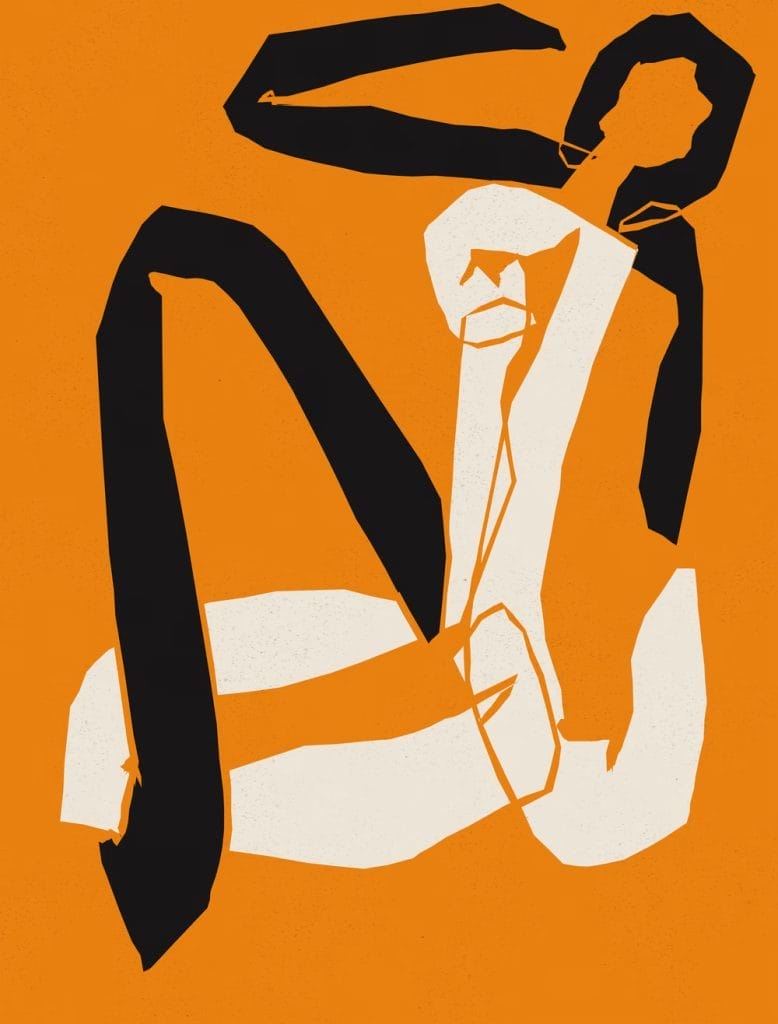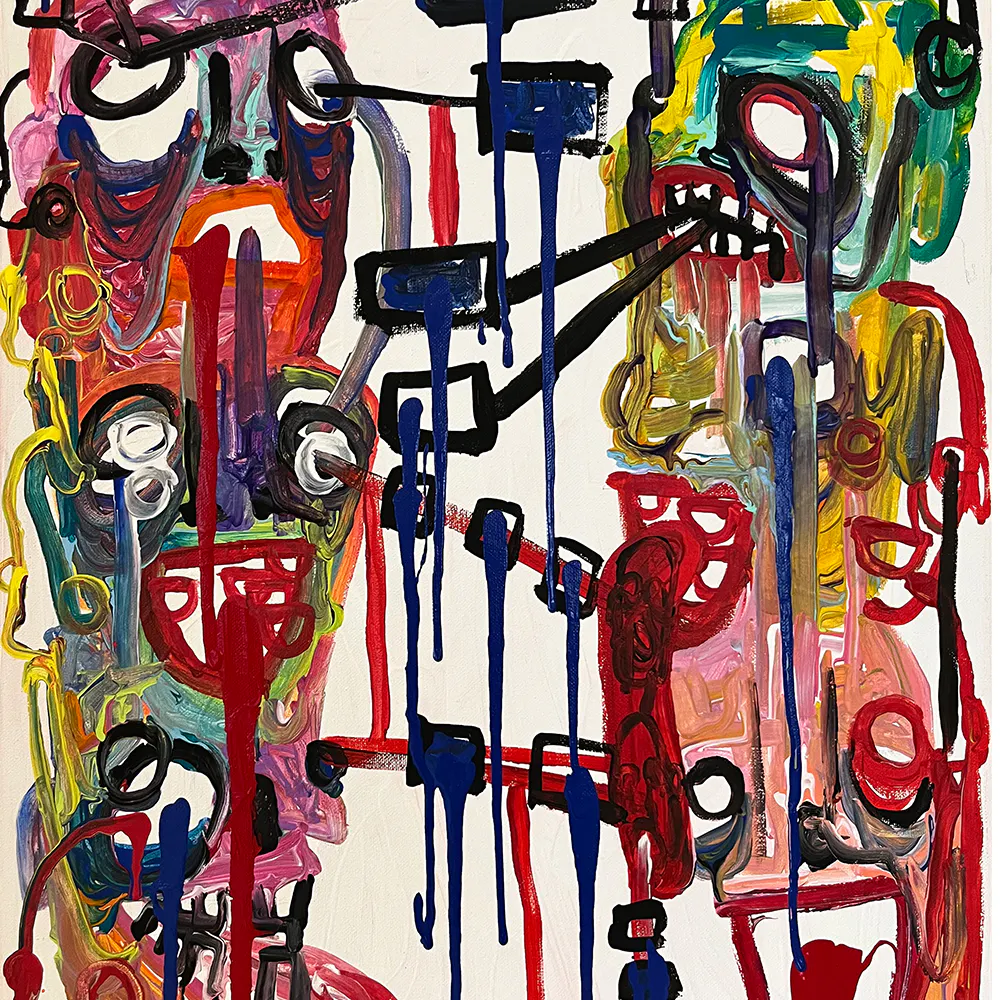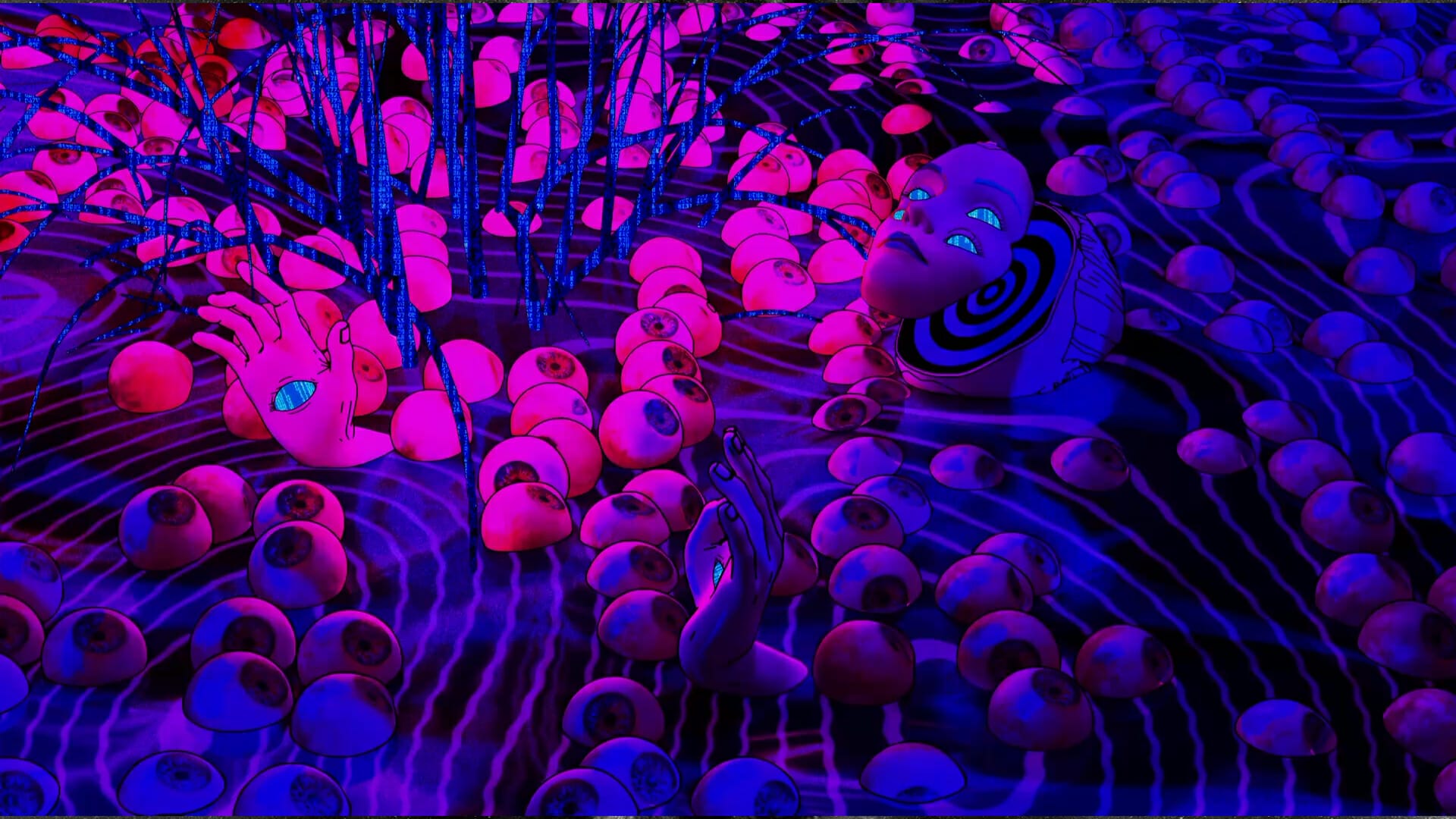
Eli Scheinman in Conversation with Fakewhale
In conversation with Fakewhale, Eli Scheinman, Director of Art at Proof and Yuga Labs, sits down with us to unravel his singular path into the art world.
Eli traces his unconventional journey from a culturally enriched upbringing through significant career shifts in academia and tech, to his current leadership in the digital art space — sharing how this varied background shapes his strategic vision and impacts his approach to digital art.
Fakewhale: Eli, could you share with us the journey that led you to the art world? What were the key influences or events that ignited your passion for art?
Eli Scheinman: I have a non-traditional background. I grew up in a family that was very much imbued by the arts. That meant visual culture, travel, music, and a number of different disciplines, but in an informal way—not in a strict formal sense where we were studying or going to museums all the time. Our home was just infused with culture and the arts in those ways. I say I have a non-traditional background because the first chapter of my life was in academia in a different discipline.
Then I had a chapter of my professional career that was in technology and building products in the mobile space. And then—and I think there’s an interesting thread here—my actual full-on engagement with the so-called art world began in essence in the digital art Web3 landscape. To provide a little color there, I got absolutely obsessed with everything happening that I saw happening in 2020-ish on the digital art NFT Web3 side. The visual art and art culture had always felt actually quite discrete and disconnected from me, and gatekeeping in certain ways.
This opportunity felt approachable, accessible, and of a sensibility that resonated with me right away. So, that was really my catalyst—when I say that, I mean the things happening on the Web3 NFT digital art side—into the art world. And the last four years or so, that’s been my obsession.

Fakewhale: As the Director of Art at Proof and Yuga Labs, your strategic vision plays a crucial role in establishing foundational practices and nurturing the culture of the digital art landscape. How have your past experiences informed your approach and outlook for this ever-expanding field?
Eli Scheinman: When I was in academia, I studied political ecology, which essentially explores the relationship between governments and very smallholder farmers, focusing on the power dynamics between these two groups. My experiences in South India, spending considerable time with these humble, smallholder farmers and learning about their challenges within the hierarchical system of subsidies, shaped my approach to empowering artists and creators broadly. I see many parallels between those experiences and how I view the role I can play and the impact I can have now.
At Proof and now within the broader Yuga organization, we’ve tried to find opportunities to provide creators with the tools, the platform, and the storytelling necessary to operate, in many cases, outside of the traditional power dynamics that may have previously existed for artists.
Fakewhale: In curating for Proof’s Grails and other projects, you’ve likely encountered many opportunities but also challenges unique to digital art. Can you discuss how your curatorial philosophy adapts to the fluid dynamics of this field?
Eli Scheinman: Yeah, so I always give the little preamble caveat that I don’t personally consider myself a curator. The reason I always say that is that I think it does somewhat of a disservice to curators who have a depth of knowledge and an art historical context within which they can locate the work they’re doing. I think of myself more as a thoughtful filter for the very smart people around me, things I see and observe on Twitter and elsewhere, and from other artists through conversation and listening. I’m sort of this filter for all that information and data to ultimately arrive at, for example, with Grails, a group exhibition that’s representative of that so-called data or information that I’m consuming.
So that’s maybe a bit of a hand-wavy answer, but broadly, in terms of a model, that’s how I think about the bringing together or so-called curation of an exhibition for me. We’ve worked with external curators in the past, and one of the things we did, which I think is kind of interesting and I’ve not seen too often in this context, is empower artists to play the role of curator in a group show. And that’s something we’ve done in the past with Emily Xie, a generative artist, and that I’d like to do a lot more in the future.

Fakewhale: If you were to highlight a few artists for a collector – both digital and new to this space – who is reading this interview, who would you like to mention?
Eli Scheinman: I think the first artist I’ll mention is diewiththemostlikes. His work is a couple of things at least. It’s very much a commentary on the digital art landscape in a way that a brand new participant could immediately extract meaning from. Additionally, the subject matter in his work is deeply evocative and tends to elicit quite visceral and strong reactions from viewers.
Putting something of that nature in front of someone new to this environment is interesting, and sort of forcing them to confront that subject matter is an engaging device. So he comes to mind for sure. Maybe another element is the shock value in the subject matter of his work. But then, he’s such a thoughtful writer and speaker that for someone who is ready to delve deeper into his body of work, they would understand there’s a great depth of expression and thoughtfulness underpinning the work itself. He exemplifies what’s possible in the digital art landscape in terms of the velocity of creation and sharing lots of work every day, but then only making a very small number of those available for sale. There’s a conversation to be had around why some pieces are for sale and the ability to share more broadly.
The other artist I’ll quickly mention is Mathcastles, with terraforms. I would not be the right person to try to distill the complexity into language understandable by someone new to this space. However, because of the way Mathcastles with terraforms uses the medium, and as a fundamental expression of blockchain art, I think it’s a very instructive body of work and collection. If distilled and explained appropriately, it serves as a great entry point to understanding the capacity of the landscape at large.
Fakewhale: You’ve consistently advocated for high-quality standards in the digital art ecosystem since the very early days. Post-NFT boom, how do you see the standards and expectations in digital art evolving?
Eli Scheinman: It’s a really good question. Well, I think the sober reality is that the expectations from both the artist and collector sides have had to be reconstructed around the financial dimension of participating in this ecosystem. That’s just what we’ve come to realize. Ultimately, this means that the reasons for both artists and collectors to participate have to be reconstructed around a different set of guidelines and expectations that are less financially driven.
We’re in that moment of sorting through this reconstruction, and it feels really hard and unclear exactly where we go from here. However, I believe we are at a point now that will ultimately serve as a filter for who persists and who continues to do the work and show up. If you’re doing the work and showing up right now, you’re here for the right reasons.
It’s difficult because people have lost money, and artists have left their full-time jobs to become full-time artists, only to see the income potential shrink considerably. It’s not easy on either side, and for the platforms, it’s certainly challenging, as you may know as well.
I think it’s about realigning expectations, getting the right participants on all sides—including builders and platforms. Then we’ll restart, in some respects, with a new group of participants who are hopefully here for slightly different, more durable, sustainable reasons.

Fakewhale: Looking ahead, are there any projects at Proof or Yuga Labs that particularly excite you? How do these initiatives reflect an evolution or continuation of your previous work, and what new directions might they explore?
Eli Scheinman: Well, as I mentioned—and you noted—the Grails exhibition that we’re organizing is a significant initiative, and our current thinking is that it will be the last exhibition in the Grails series. We plan to cap this series at six seasons. This feels like the right natural lifecycle for the exhibition series. This decision has very little to do with the market and more to do with understanding that everything has a natural lifecycle, and you don’t want to force something to continue when it might have reached its natural conclusion.
So, that’s where all of my energy and our collective energy is focused at the moment: celebrating the entire Grails series through this final exhibition.

fakewhale
Founded in 2021, Fakewhale advocates the digital art market's evolution. Viewing NFT technology as a container for art, and leveraging the expansive scope of digital culture, Fakewhale strives to shape a new ecosystem in which art and technology become the starting point, rather than the final destination.
You may also like
Luis Ponce: A Visual Exploration through Cycles of (Dis)Integration
Luis Ponce is a self-taught Mexican visual artist based in Montreal currently working primarily on d
Claudia Koh, Soft Spot at Super Dakota, Brussels
“Soft Spot” by Claudia Koh, curated by Super Dakota, at Super Dakota, Brussels, 12/03/20
Jun Ong, “Halo,” at Xiu De Bai Pavilion, Yan Shui, Tainan, Taiwan
“Halo” by Jun Ong, curated by Yue Jin Art Museum, at Xiu De Bai Pavilion, Yan Shui, Tain





